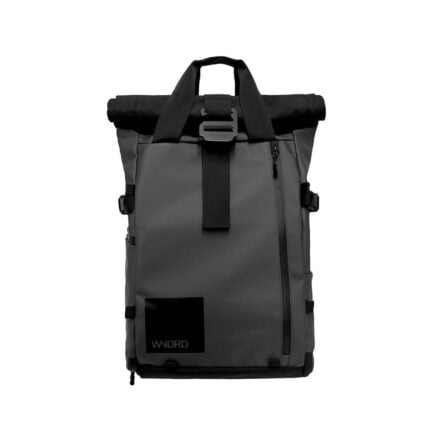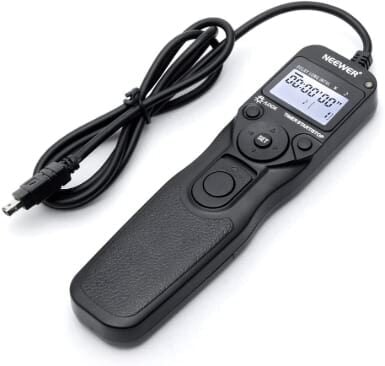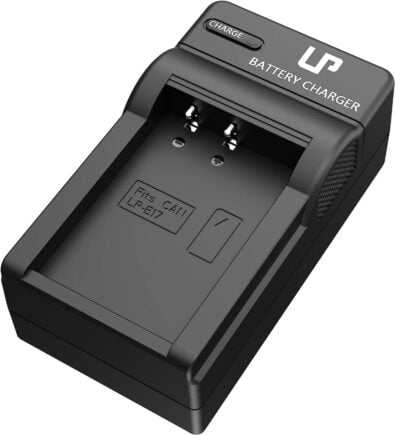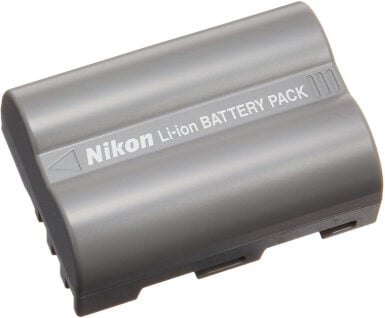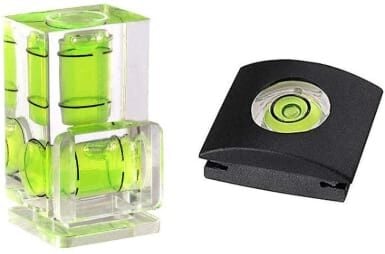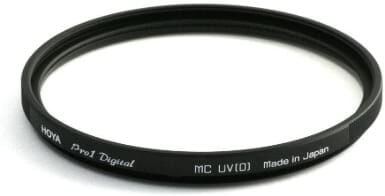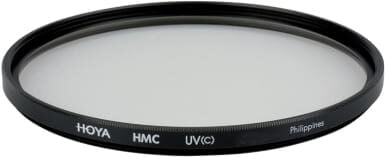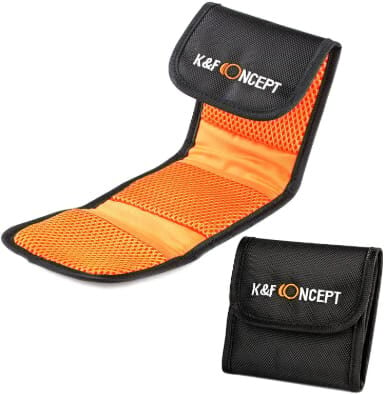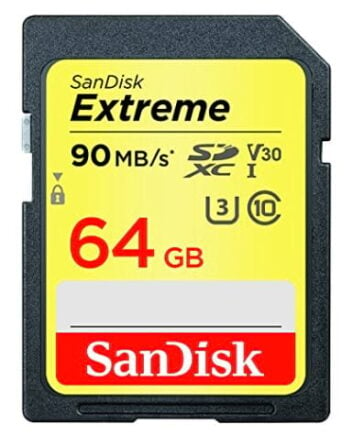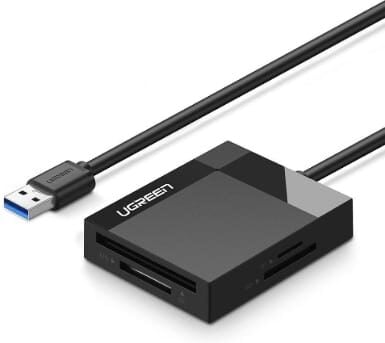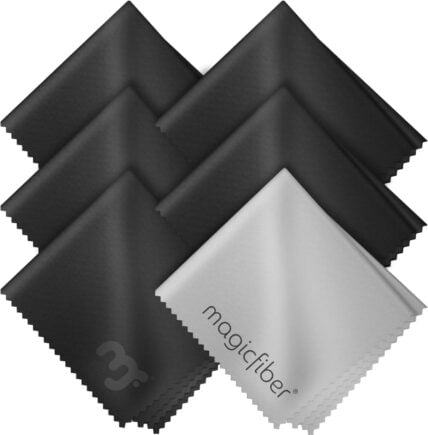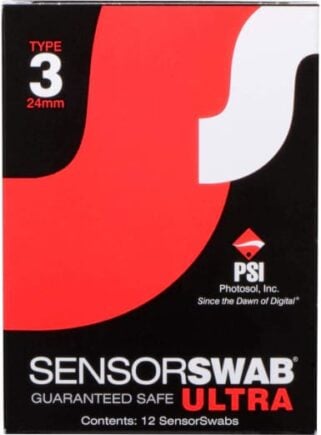If you’re planning on being the next great freelance photographer, then you’re going to need a great kit. No kit is complete without all of the essential camera accessories either!
Like Batman himself, you’ll need a utility belt stocked with all manner of gadgets and gizmos to get shit done. A shutter release for those long exposures, spare batteries for those long shoots, cleaning supplies, and much, much more will all be crucial to your success in the field.
Whether you are a professional or a beginner, there are a lot of different products out there, so you may need guidance when looking for the best camera accessories for your awesome travel camera.
Trust us when we say that having the right camera accessories is just as important as having the right camera or the right tripod. Many of these professional camera accessories are extremely useful if not necessary for any kit. So take a look at our list for the best camera accessories of 2025 and see which ones are best for you.

The Broke Backpacker is supported by you. Clicking through our links may earn us a small affiliate commission, and that's what allows us to keep producing free content 🙂 Learn more.
The Best Camera Accessories of 2025
Travel Camera Backpack
Proper camera kits are going to have a lot of accessories and you’re going to need a good bag to put all of them in! Whether or not you invest in a little messenger bag or a full-on backpack, you’re going to need plenty of space for your accessories.
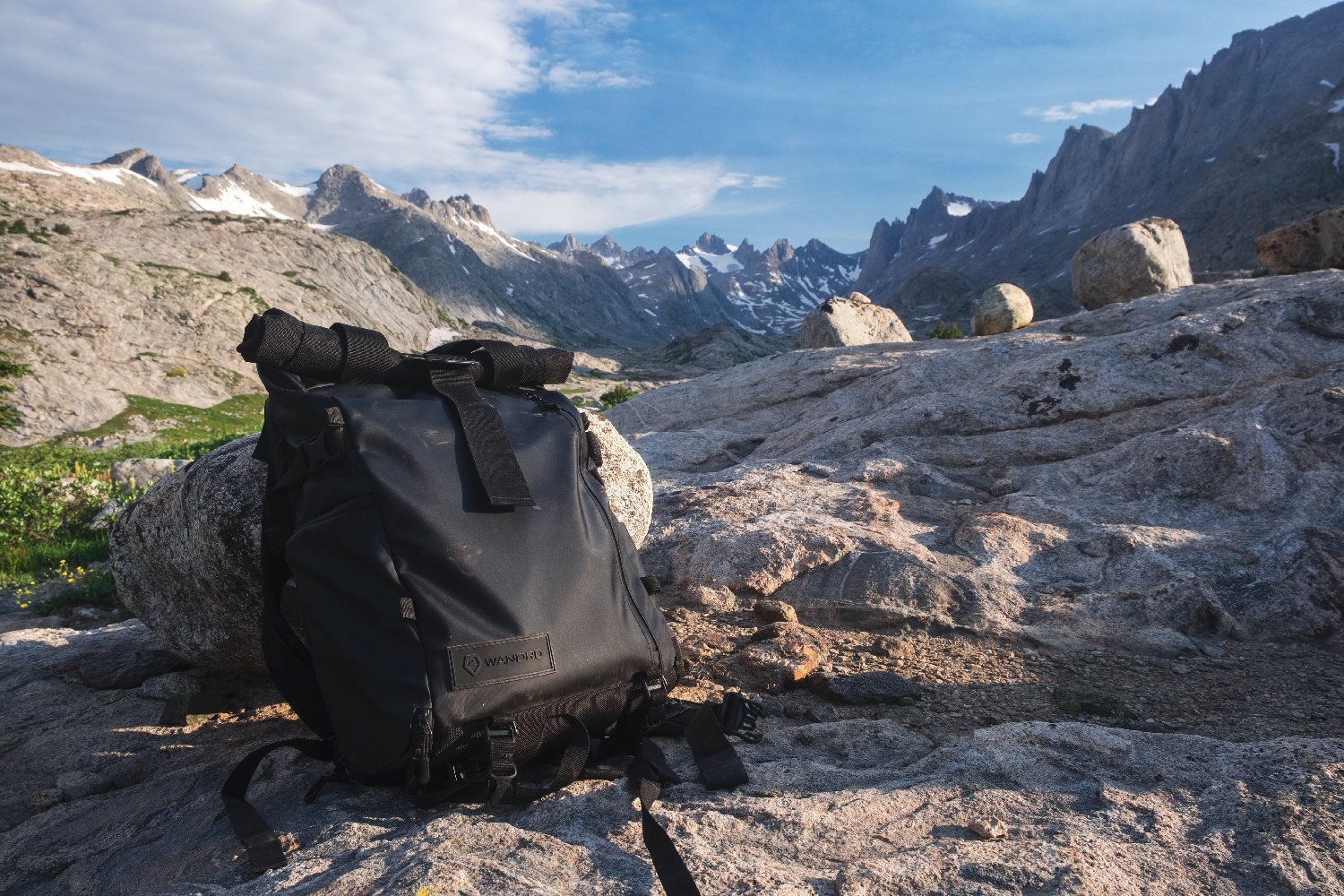
Photo: Roaming Ralph
Most camera bags have enough space to accommodate your camera body plus the essential accessories. Some bags may be better at compartmentalizing accessories than others. If a bag doesn’t have much dedicated space for accessories, then you may think about investing in a separate pouch like the PEAK Design Field Pouch or the ProCase Accessory Bag. Whether or not you think you need one of these pouches is up to you.
Choosing the right bag is a big decision as it’s going to be responsible for holding and protecting all of your expensive equipment. For your’s and your gear’s sake, don’t skimp on this purchase – find the best camera bag possible!
Finding a pack that combines packability with comfort can be difficult, but we thing WNDRD found the perfect balance. Small and comfortable enough to be used as your everyday camera bag, but with 31 liters of space to easily fit all the gear you want to bring along.
Our Favorite Travel Backpack
WNDRD PRVKE 31 Liter Backpack
- > $239
- > Large capacity
- > Durable
- > Customizable
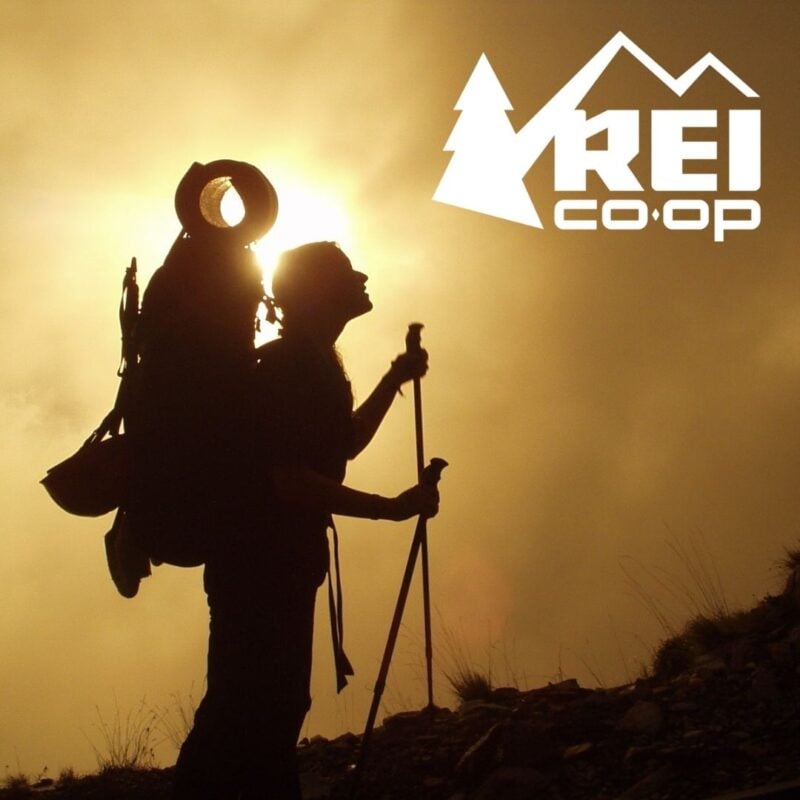
REI is one of America’s biggest and most-loved outdoor gear retailers.
Now, for just $30, get a lifetime membership that entitles you to 10% OFF on most items, access to their trade-in scheme and discount rentals.
Join REI Today!Travel Tripod
Of all the photography accessories, a tripod may be the most quintessential camera accessory you can own. So important is a tripod, that, frankly, it should be the very first thing that you buy after a camera.
A tripod is a must-have camera accessory because it allows for maximum image sharpness in addition to creative techniques that would be otherwise impossible. Long exposures, astrophotography, image stacking, videography; most of these would be extremely difficult without a tripod.
Due to the tripod’s importance in any camera bag, we’ve already dedicated a full article just to finding the right one. Check out the article here, study up, and think about which tripod is best for you.
Our Favorite Travel Tripod
Shutter Release
Shutter releases are handy little devices that help to limit camera shake which is caused when you press down the shutter button. For portrait and long exposure photographers, who require absolute sharpness and deal with longer shutter speeds, a shutter release is a crucial item. They are certainly some of the most useful professional camera accessories out there and a must-have for all photographers.
Shutter releases range from pretty basic to exceptional in quality. The more advanced shutter releases are often wireless and have a radio antenna. Often times, the more expensive remotes will possess many more effective shooting modes as well. The more premium shutter releases are also nice because they tend to last longer as well.
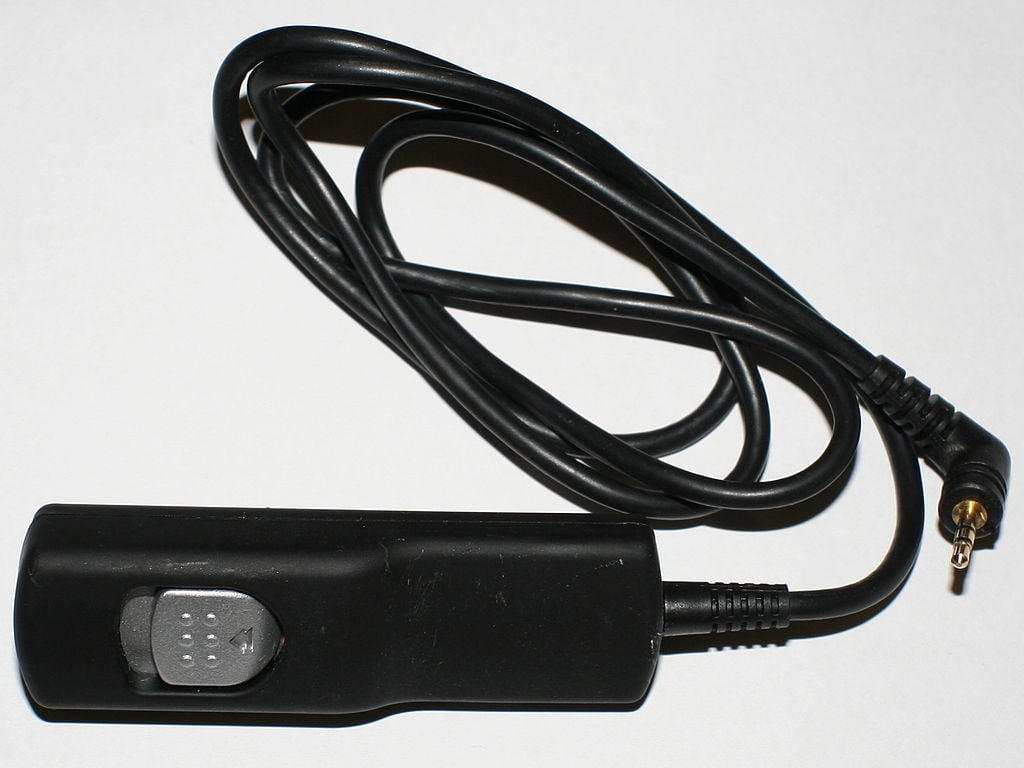
More basic shutter releases will be able to do much the same as the more expensive ones do but will almost always need to be plugged into your camera. There are cheap radio shutter releases out there but often they fail easily and you shouldn’t really trust them much. If you’re going to invest in a corded shutter release, be sure to take note of your camera’s specific port – many use different types.
Whether or not you need a corded or wireless shutter release is really a matter of preference. If you’re the type that likes selfies or needs to be away from the camera (wildlife photographers often set up multiple cameras that need to be controlled simultaneously) then a wireless shutter release may be best. If you tend to shoot with a tripod and/or don’t mind the chord, maybe pay less for a corded shutter release; they work almost as well as the wireless kind.
Our Favorite Shutter Releases
Neewar Shutter Remote for Canon
- > $23.89
- > Affordable
- > Works well
- > Good Features
Spare Batteries + Battery Case
There is nothing more frustrating than when your camera dies in the middle of shooting! They always seem to fail at the best times too like when the light is just right or when something spectacular is happening. To avoid a dead camera and the frustration that follows, spare batteries are among the best photography accessories. Mirrorless camera user especially will benefit from extra batteries.
It can be maddening never knowing when the next charge may come. Those who plan on shooting intensively or don’t have the luxury of having a power outlet consistently nearby will benefit the most from spare batteries.
Spare batteries primarily come in two varieties: 1) official batteries and 2) 3rd party batteries.
Official batteries, those that are made by the company that produces your camera, are usually more expensive but last longer and hold a better charge. 3rd party batteries are usually of lesser quality and tend to perform less effectively; these may even swell over time and will no longer be useful. I find a mix of both official and 3rd party batteries to be the most effective setup.

Photo: Kai Hendry (Flickr)
If you’re going to have a lot of spare batteries (mirrorless users will probably fall under this category) you’re going to need a case or wallet to hold them as well. Organization will be key when it comes to using your essential camera accessories and so you don’t want them floating around everywhere.
Most battery cases are universally sized and should be able to accommodate most batteries. Just to be on the safe side though, make sure that the case can hold your specific batteries before buying.
Our Favorite Batteries
LP LP-E17 Battery Charger
- > $12.99
- > Standard Compatibility
- > Worldwide use
- > Portable
Nikon Rechargeable Battery
- > $69.95
- > Original manufacturer
- > Lasts long
- > Sightly more expensive
Camera Strap
Camera straps are a must-have camera accessory, and most camera straps that come prepackaged with camera bodies are pretty uninspiring. Usually, these straps are either physically uncomfortable or ineffective to use. For these reasons, it would behoove most photographers to invest in a separate camera strap for their camera. The right strap can be a great camera accessory and really improve your shooting experience.
Camera straps come in several varieties from neck straps to hand grips to wrist straps.
The most common camera strap is a neck strap, which, as the name implies, allows the camera to be draped conveniently around the neck. A good neck strap will have the proper amount of padding and be fully adjustable to suit your body. Neck straps will allow very easy access to your camera but will be quite vulnerable to both thieves and foreign objects as they sometimes hang precariously.

Wrist straps are another popular option. These are convenient because they are very strong, small, and allow for quick shooting. Unfortunately with a wrist strap, you cannot hang your camera as you would with a neck strap. You can dangle the camera from your wrist but you will probably end up just holding it for most of the time. For those who shoot frequently and have the camera in their hands often though, this isn’t much of a problem.
Finally, hand straps behave much in the same as wrist straps do but are even more hands-on. These cannot hang at all and are pretty much in your hands 100% of the time. Hand straps can be quite comfortable and provide a great deal of security but you’ll have to find the perfect one; like a glove, these need to fit perfectly to be effective.
Our Favorite Camera Strap
Techion Braided Camera Wrist Strap
- > $8.99
- > Strong
- > Inconspicuous
- > Effective
Leveler
If you’re a landscape or urban photographer who needs a perfectly level horizon and/or don’t like to rely upon an in-camera gyroscope, a leveler could be a great addition to your bag. Levelers also take up next to zero room in your camera bag and cost practically nothing as well! Considering their usefulness, price, and portability, levelers are one of the best camera accessories that photographers can buy.
Cameras levelers are much like the levelers in your dad’s toolkit – they use a simple bubble system that lines up with a series of markers, which in turn indicate levelness; simple as that. When the bubble within the leveler is properly oriented, boom, you have a level camera. A camera leveler fits neatly onto the hot shoe and is very inconspicuous as well.
That’s really all that there is to it; a leveler isn’t an extremely complex piece of equipment but it’s quite effective and very inexpensive. For landscape and architectural photographers who like their perfect horizons, a leveler is an easy buy and a great cheap camera accessory. Some tripods have also started including a built-in leveler, so keep an eye out when shopping around for your next tripod!
Our Favorite Leveler
Best Camera Accessories: Filters
UV Filters
No kit is complete without filters for your camera lenses and UV Filters should be the very thing that you buy after purchasing a new lens. Aside from cutting haze in your photos, UV filters provide crucial protection against foreign objects. They are very useful items for protecting your lenses and must-have camera accessories.
A UV filter is, essentially, a clear piece of glass that screws in over the front of your lens. As mentioned before, this extra layer of glass adds vital protection and could mean the difference between a cracked $800 lens and a cracked $25 filter. Better the latter than the former I say.
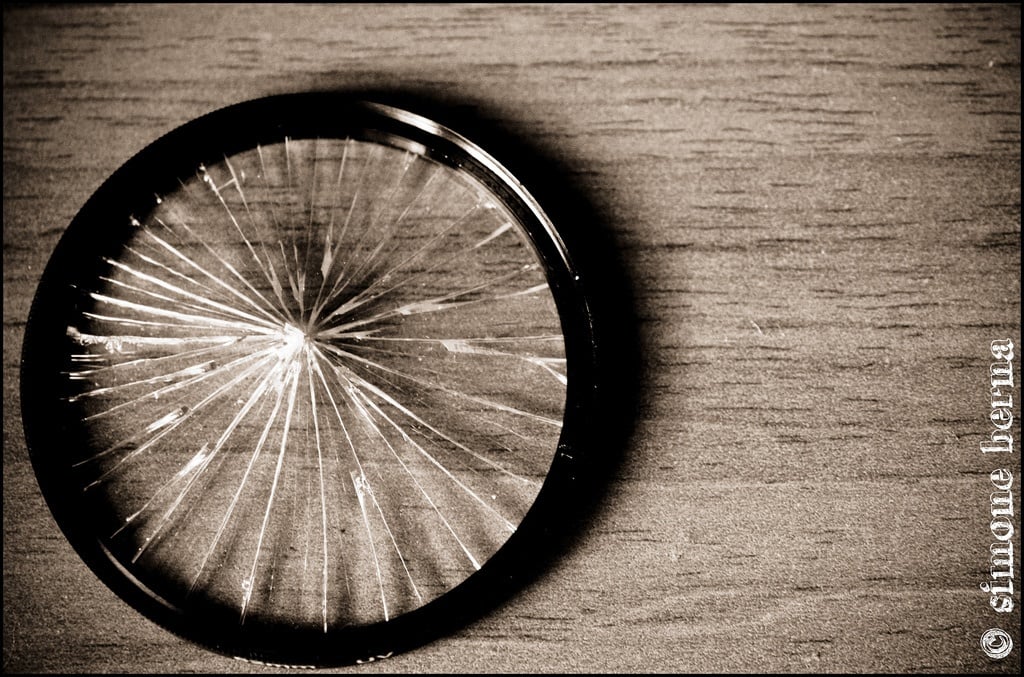
Photo: Simone Berna (Flickr)
A UV filter’s second function is to increase photo quality by limiting haze and adding crispness. Honestly, I’ve never really noticed a huge amount of added clarity with UV filters. Besides, haze can be an attractive element in photos anyways.
The difference between a good and bad UV filter is the degree of scratch resistant coating present. Higher quality filters will have better coatings and be more resistant to scratching while shittier ones will quickly become covered with scrapes and in turn inhibit photo quality.
I suggest going with a middle of the pack manufacturer like Hoya when it comes to buying a UV filter. Build quality is good and the price is usually right.
Our Favorite UV Filters
Hoya 58mm UV Filter
- > $
- > Good quality for price
- > Scratch Resistant
- > Strong
Polarizer Filter
A polarizer filter can mean the difference between a good photo and a great photo! By blocking certain wavelengths of light, those which are responsible for glare, polarizer filters add saturation and deeper shades of color to photos. Polarizer filters are one of the coolest camera accessories and essential to any professional photography kit.
Polarizer filters are like UV filters in that they’re circular and attach to the front of the lens. There are a number of key differences between UV and polarizer filters though. Polarizer filters, specifically circular polarizers, actually rotate, which is one of the ways that they are able to block those specific bands of light. The glass used in polarizers is also darker, as opposed to being clear, so you’ll lose 2 stops of light when using one.

When used properly, polarizer filters essentially limit glare, which then leads to deeper colors. Landscape photographers love polarizer filters because they can make skies super blue and create greater drama. Other photographers may appreciate a polarizer ability to cut reflections in glass and water.
When purchasing a polarizer filter, I suggest going more upper tier. You’ll gain higher quality photos and the filter will be more resistant to scratching, which polarizers are already more prone to. You can go middle-level with something like Hoya but you can’t go wrong with a more premium model from a company like B&W.
Our Favorite Polarizer Filters
B + W 58mm Circular Polarizer Filter
- > $37.99
- > Great colors
- > Top Quality
- > More expensive
Hoya 82mm Circular Polarizer Filter
- > $66.90
- > Good bang for buck
- > Scratch Resistant
- > Good quality
Filter Case
There are all kinds of filters for camera lenses out there besides UVs and polarizers like ND filters and color filters. Once you start collecting these filters, you’ll find that your bag can be a cluttered mess so you’re going to need something to hold all of them. A filter wallet does a very good job of keeping your filters organized. I have several and you should have one of these essential camera accessories as well.

Photo: Andrew Magill (Flickr)
Filter wallets can hold any number of filters depending on the wallet’s size. I’ve seen filters wallets accommodate up to 9 filters though there may be even larger out there! Most filter wallets are pretty equal in terms of build quality. In the end, it really comes down how many filters you need to store when buying a wallet. Invest in one wallet or invest in many; whatever floats your boat.
Our Favorite Filter Case
Filter Wrenches
Ever had a screw-in filter that was twisted too tight or stuck onto another? Ever felt the pain and madness of trying to untwist them and you just can’t get a good grip? If you’ve ever thought about throwing your filters against a brick wall because they wouldn’t come unfastened, then filters wrenches are one of the must-have camera accessories for you!
Filter wrenches are one of those accessories that few photographers actually know about but make life 10 times easier if they had them. Thanks to special teeth these wrenches provide additional grip and give you that extra torque to pry off difficult filters. They are one of the coolest camera accessories that I ever invested in a real lifesaver sometimes.
A typical set of filter wrenches will come with two different sized wrenches – a large and small one – and each is used respectively for different filter sizes. When combined both should cover the vast majority of filter threads. Since these wrenches are relatively thin and made from plastic, they won’t weigh anything either. Overall, these are very portable and effective tools to have in your bag.

Do You Want to Travel FOREVER??
Pop your email in below to get a FREE copy of ‘How to Travel the World on $10 a Day!’.
Our Favorite Filter Wrenches
Neewar Rubber Coated Lens Filter Remover
- > $16.29
- > Works great
- > Portable
- > Affordable
Best Camera Accessories: Storage
SD Cards + Wallet
Like running out of batteries, running out of memory can be infuriating. The last thing that you’d want is to be in the middle of a shoot and have your camera lock up because you filled up your memory card. You never know when you’ll be able to back up your files onto a new computer either so having additional SD cards are imperative when considering the best camera accessories for your kit.
Digital memory has come a long way and these days SD cards are quite affordable. 32 GB cards should cost no more than $15 while 64GB cards cost only $20-$25. These capacities, compared to what they were 5 years ago, are great deals.
I really don’t suggest that you buy anything less than 32GB for your camera. With modern sensors using more and more megapixels these days, which directly affect file size, and the growing popularity of 4k video, anything less than 32GB will not be enough. You’ll especially want higher memory when looking for travel camera accessories – you’ll need all the space you can get as it might be longer between downloads.
I also suggest buying an SD card with a fast transfer speed; doing so will allow for optimal speed and processing times. Remember that, at the end of the day, cameras are essentially computers – watching the camera slowly buffer its memory because the transfer speed is subpar can be just as frustrating as running out of memory altogether.
Our Favorite SD Card and Wallet
SanDisk Extreme 64GB SD Card
- > $42.99
- > Large capacity
- > Fast processing
- > Good price
Think Tank Photo SD Pixel Pocket Rocket Memory Card Case
- > $18.75
- > Compact
- > Fits 9 SD memory cards
- > Built in business card holder
Hard drive
SD cards will be your primary means of storage while in the field but what do you do when you want to empty them of all of their files? In this case, you need an external hard drive for backing up your images! An external hard drive is a great place to store those image files that you just can’t let go of or want to edit later. For every photographer, this one of the best camera accessories that one could have.
Depending on what kind of photographer you are, you will require a certain amount of space on your hard drive.

Photo: Karen (Flickr)
If your camera creates larger file sizes and/or you have a lot of images that you need to store, then you’ll need a hard drive with a larger capacity. You will need at least 500 GB of storage in this case though 1TB or more may even be more appropriate as you’ll be surprised at how fast those can fill up.
If you’re the more casual type of photographer who takes fewer photos, shoots JPEGs more often, and/or likes to clean house regularly, you could probably get away with less than 500GB, say around 250GB or 125GB. If you find that these storage sizes are still too large, well that hard drive is great for other stuff like videos, music, and old documents too.
Our Favorite Hard Drive
Seagate 1TB External Hard Drive
- > $69.99
- > Easy to set up
- > Works very well
- > USB 3.0
Memory Card Reader
These days, built-in SD card readers are becoming less common in computers, especially so with laptops. To avoid the sticky situation of not being able to offload your photos from an SD card, you should think about investing in an SD card reader. Though maybe not one of the great necessities of camera kits, having one may still save your ass in certain situations.
SD card readers are fairly standard tech. By using a standard USB plug, SD card readers serve as adapters for nearly any device. Simply insert your SD card into the reader and then plug the latter into a USB port and, boom, you can now transfer your files.
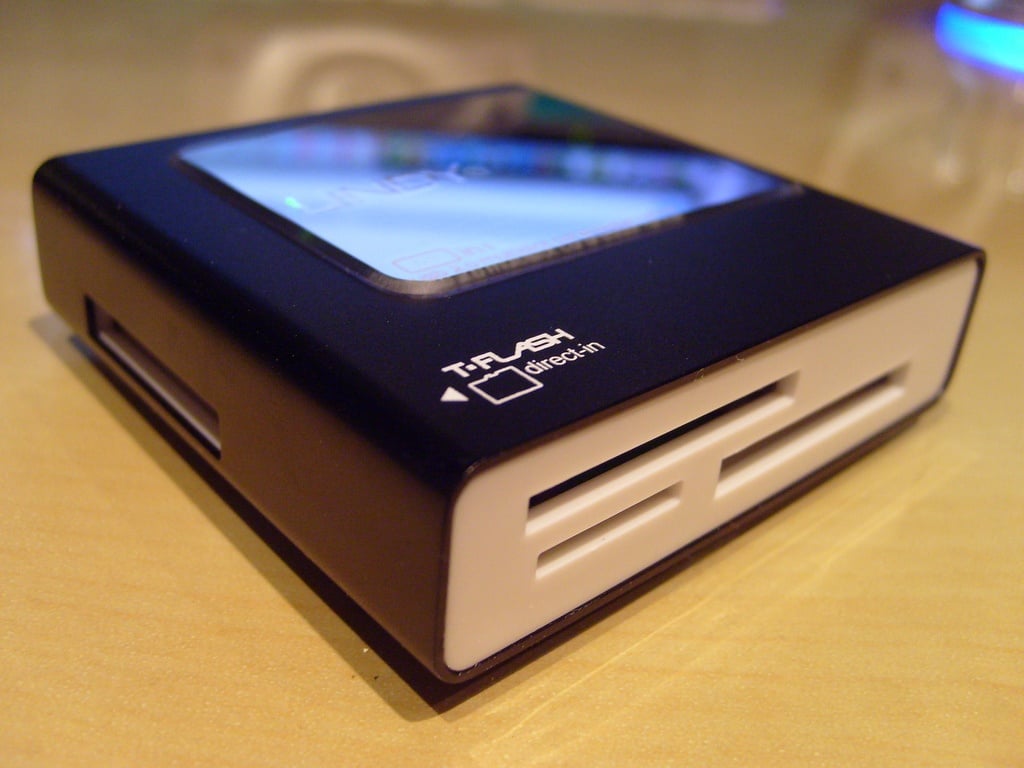
Photo: DeclanTM (Flickr)
An SD card reader is a simple device, one that doesn’t offer too much variation throughout the market. You can choose between different designs i.e. a stick or maybe a chorded version but that’s about as complicated as it gets. If you’re in need of an SD card reader, there are few bad choices out there.
Our Favorite Memory Card Reader
Best Camera Accessories: Cleaning and Maintenance
Microfiber Cloth
Lenses get smudged; viewfinders become fogged up on cold days; these, among other minor dirty little things, happen all the time in the field. One of the quickest and most convenient ways of cleaning your gear on the go is a good microfibre cloth. So handy are these wipes that they’re practically ubiquitous in camera bags and time after time they’ve proven to be one of the best camera accessories that you can have.
Using a microfiber cloth is pretty straightforward: you store it, keep it clean and dry, and then use it to clean your gear; simple as that.
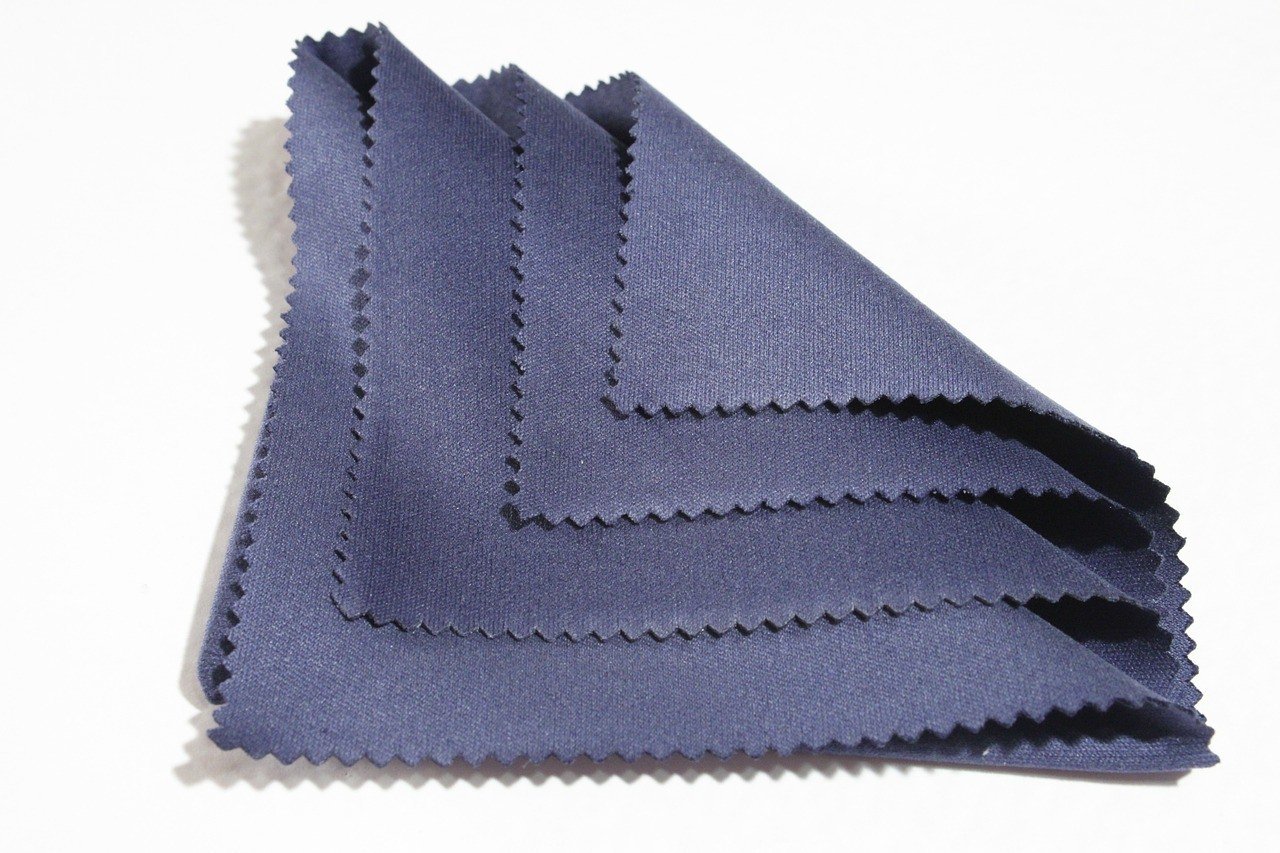
Not every microfibre cloth is created equal though. There are definitely some shabby ones out there that kinda suck after limited use and these end making your lenses even dirtier in the long run.
Do yourself a favor and invest in a good microfibre cloth. A little extra cash will ensure that it’ll last much longer and be much more reliable.
On a side note, NEVER use a microfiber cloth to clean a camera sensor. Doing so will introduce abrasive particles, which is a sure way to scratch the sensitive sensor.
Our Favorite Microfiber Cloth
MagicFiber Microfiber Cleaning Cloth
- > $11.99
- > Higher quality
- > Pack of 6
- > Larger size
Giottos Rocket Blaster
Keeping your camera clean is just as important as keeping it safe, and having a clear sensor is just as crucial to good photos as clear glass. This is another one of those must have camera accessories, as your camera’s sensors are very sensitive and require special treatment. You can’t just clean them casually with a rag or with soap and water; you’ll need a special tool to keep your sensor from being damaged while cleaning.
For those pesky dust and dirt particles that can coat your camera sensor, the Giottos Rocket Blaster is a godsend. Using powerful puffs of air, this simple device is great for cleaning off specks of grit that may be clinging to your camera sensor.
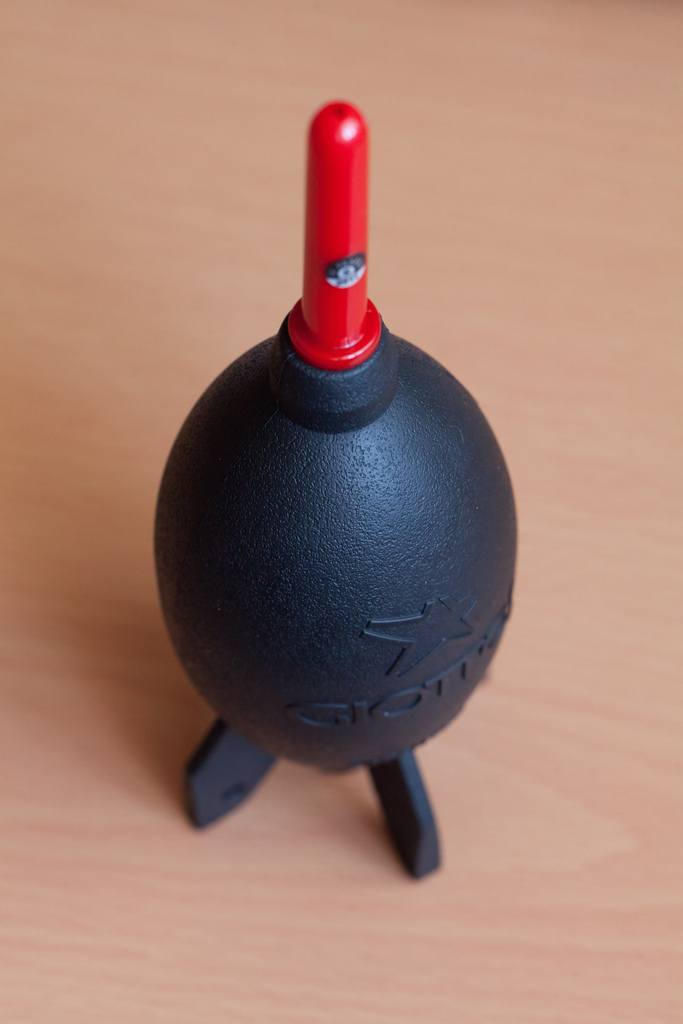
Photo: Keith Williamson (Flickr)
Behaving much in the same way as a bellows, the Rocket Blaster works by squeezing it firmly resulting in a strong blast of air that should clear out most particles. The sensor is, in the process, not actually touched by any foreign object in the process and so very unlikely to be damaged.
The Giottos Rocket Blaster comes in several sizes: small, medium, and large. I definitely suggest that you buy the larger one. Although the others may appear to be more compact and thus easier to pack into your camera bag, they don’t produce enough force to dislodge a lot of the grit. The larger blasters are really the most effective and, in my opinion, the only real choice.
Our Favorite Giottos
Giottos Rocket Air Blaster – Large
- > $17.99
- > More effective than smaller versions
- > Durable
- > Easy to use
Sensor Swabs
For those really stubborn pieces of dirt that just won’t come dislodged, Sensor Swabs are your next best bet. These specialized cleaning clothes are designed specifically for certain sensors and are the ultimate form of cleaning. For those who like to keep their sensor squeaky-clean (and don’t like paying someone to do it for them) sensor swabs are a must-have camera accessory.
Sensor swabs are fairly easy to use, requiring you to only wet the tip and firmly brush the sensor, but they do require a few considerations. Firstly, you will need the proper solution i.e. some Photographic Solutions Optic Cleaner, to clean the sensor. Secondly, there are three different sensor swab styles for the three major sensor sizes and you must use the correct one. Take note of your camera’s sensor size and be sure to purchase the right swab size for your sensor.
You must very careful when using a Sensor Swab. Because you are literally touching the camera sensor and thus inviting the opportunity to scratch it, you have to use the swab correctly. Use only a little liquid on the swab and use each side of the swab only once. Passing over the sensor with a swab that has grit on it may cause scratching.
Our Favorite Sensor Swabs and Solution
Photographic Solutions Sensor Swabs Type 1
- > $39.95
- > Properly sized
- > Excellent Quality
- > Pack of 10
Photographic Solutions Sensor Swabs Type 2
- > $37.90
- > Same as above
Photographic Solutions Sensor Swabs Type 3
- > $39.95
- > Same as above
Photographic Solutions Eclipse Cleaning Solution
- > $
- > Industry standard
- > Non-abrasive
- > Works on other glass surfaces

Now, you could spend a fat chunk of $$$ on the WRONG present for someone. Wrong size hiking boots, wrong fit backpack, wrong shape sleeping bag… As any adventurer will tell you, gear is a personal choice.
So give the adventurer in your life the gift of convenience: buy them an REI Co-op gift card! REI is The Broke Backpacker’s retailer of choice for ALL things outdoors, and an REI gift card is the perfect present you can buy from them. And then you won’t have to keep the receipt. 😉
Buy on REI!Best Camera Accessories: Lighting
External Flash
Flash photography can be a pretty advanced form of photography. Having a working understanding of it can take some time but doing so will open up a whole new world of photographic opportunities. By creating your own light you’ll have greater control over your subjects and the scene itself. For those who want more powerful accessories for portrait photography in addition to just being a better photographer, an external flash is an indispensable tool and one of the best DSLR tools that you can own.
Flash devices (internal and external) serve the purpose of adding extra light to a scene and change the overall exposure. By filling a room or immediate foreground with light, you’ll gain a huge advantage in adverse conditions. Some examples include shooting into a front-lit scene, compensating for extreme contrast, and adding depth to portraits.

Most cameras come with a built-in flash but the majority of these underperform greatly. An external flash does a much better job of lighting up a scene. External flashes are more powerful because they use their own batteries and offer greater control thanks to their plentiful settings. Many external flashes also have the ability to swivel whilst mounted or can be used remotely, thus creating additional angles for more varied lighting.
Flash photography can be difficult to understand. For more on the subject, you can read up on the technique at CreativeLive and Photography Life.
Flashes range in build-quality from basic units with fewer controls to ultra high-tech with built-in computers practically. How much you intend on using a flash will dictate how nice of a flash you need. Like most of the camera necessities on this list, I suggest going mid-range in the beginning – the cheap camera accessories break too easily and the expensive ones may be too large of a commitment.
Our Favorite External Flash
YongNuo YN-560IV Speedlite
- > $85
- > Compatible with most major brands
- > Powerful
- > Great bang for buck
Reflectors
If you’ve already purchased a flash and are looking for ways to manipulate the light even further, reflectors are one of the best camera accessories for doing so. These tools are very packable, effective, and, best of all, inexpensive. Reflectors are one of the best camera accessories for portrait photography and are very useful in other studio and outdoor work as well.
Reflectors are simple devices that essentially serve to redirect light. They come in many forms e.g. as a metal hood for your camera but the most common form is simply a sheet of material stretched over a ring-shaped frame. These circular reflectors are made from durable and flexible materials and so can be warped for packing.
Reflectors also come in different colors, which in turn affect the nature of the reflected light. You can read up here on reflector colors and, for that matter, using reflectors in general.

Photo: Frederico Grechi (WikiCommons)
Reflectors are great for brightening up shadows and creating a more even exposure. Studio photographers often use reflectors as fill lighting while outdoor photographers may use them to combat harsh midday light or overly contrasty scene. The light cast by reflectors is also very soft and gives off a very natural look.
Reflectors are a great investment for portrait photographers who aren’t looking to spend too much. For less than $20, you can own a set of reflectors and immediately up your photography game. Reflectors should be on the photography equipment list for both beginner and professional alike.
Our Favorite Reflectors
Selens 5-in-1 43″ Reflectors
- > $35.19
- > 5 different colors
- > Folds neatly
- > Durable
How We Tested To Find The Best Camera Accessories
Over a period of time and between all of the members of our team, we have tried each and every one of these camera accessories out for ourselves. In order to fairly assess these accessories, we looked at the following criteria;
User Friendliness
Very few of the team members are serious photographers. As such, we love gear that regular travelers can get to grips with relatively quickly and improve their photography game.
Usefulness
This one is presumably a bit of a no-brainer right? If it’s not helping you out in some way, why lug it around in your pack? We made sure to select essential camera accessories you’ll want to have when the time comes.
Portability
Luckily most camera accessories are easily packed away and take up little space, nonetheless, we took how well it packed into account when picking these accessories.
Packed Weight
Packing your backpack/camera bag is more times than not a game of ounces, and the last thing you want is to be dragging a bunch of useless gear around just in case you need it. We made sure to only recommend gear we believe to be worth the extra ounces.
FAQ about the Best Camera Accessories
Still have some questions? No problem! We’ve listed and answered the most commonly asked questions below. Here’s what people usually want to know:

Our GREATEST Travel Secrets…
Pop your email here & get the original Broke Backpacker Bible for FREE.
Final Thoughts
There you have them: the 17 best photography accessories of 2025! With these useful mirrorless and DSLR tools, you’ll be prepared for any situation there is. You’ll have filters for creating cool effects (not to mention protection), the perfect camera strap for your body, and plenty of memory between those many SD cards and hard drives. What more could you want?
We used a cheesy Batman metaphor earlier because we think that having so many accessories is both useful and, in some ways, kind of a cool feeling. You’ll never know when you need one of these essential camera accessories anyways. As the saying goes: “better to have them and not need them than to need them and not have them.”
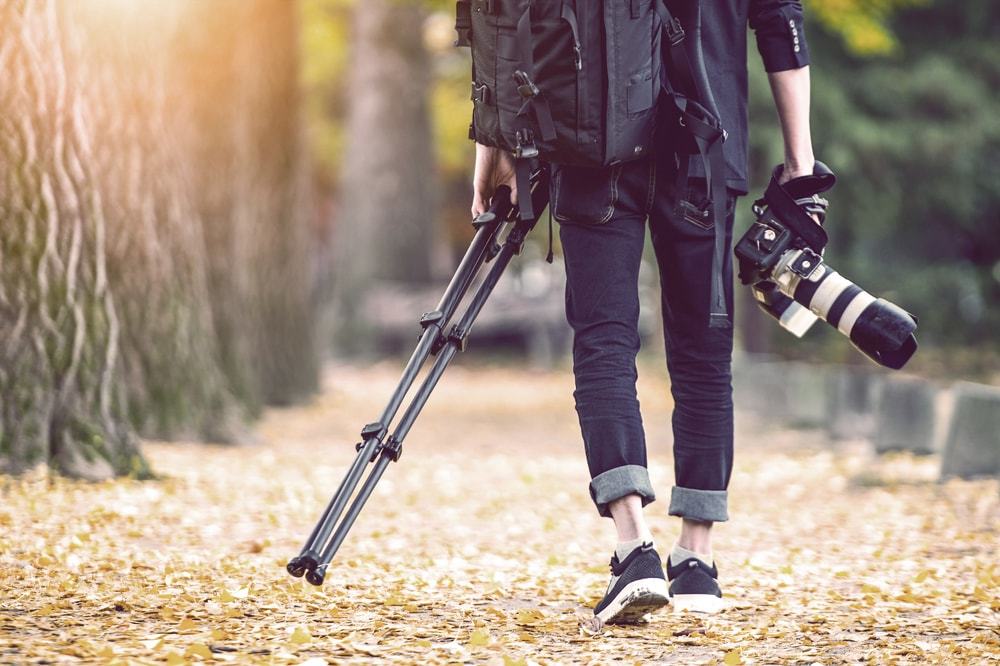
Buy Us a Coffee!
A couple of you lovely readers suggested we set up a tip jar for direct support as an alternative to booking through our links. So we created one!
You can now buy The Broke Backpacker a coffee. If you like and use our content to plan your trips, it’s a much appreciated way to show appreciation 🙂


